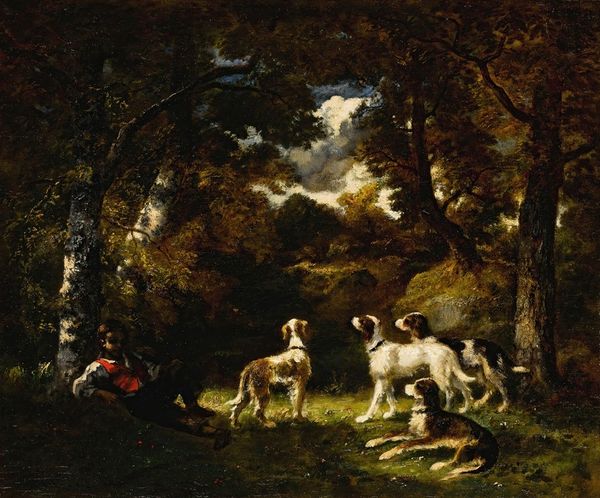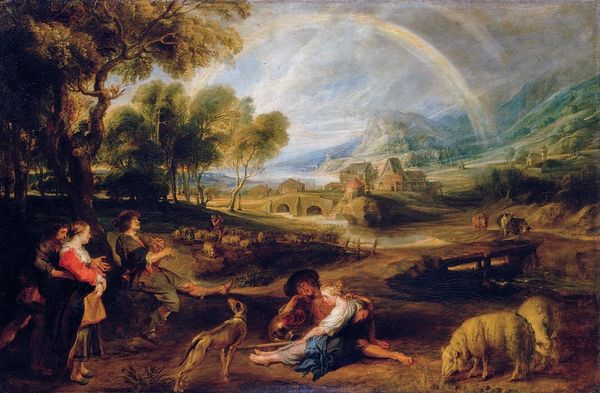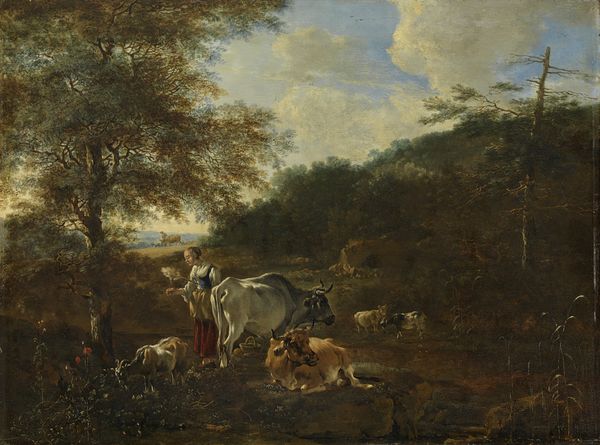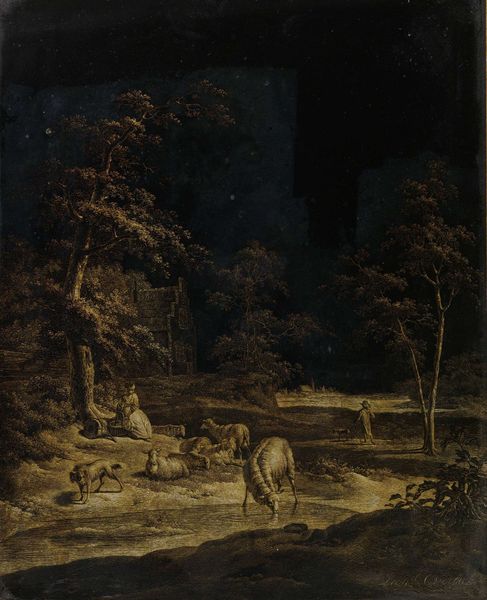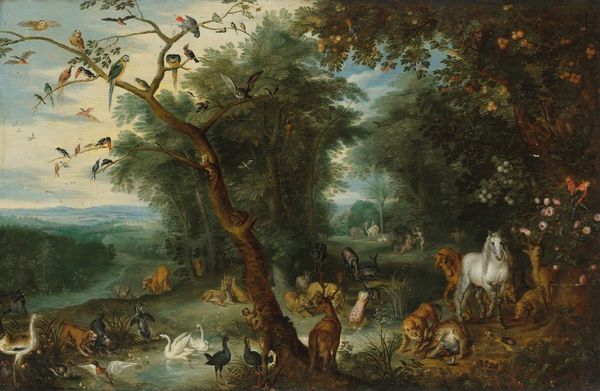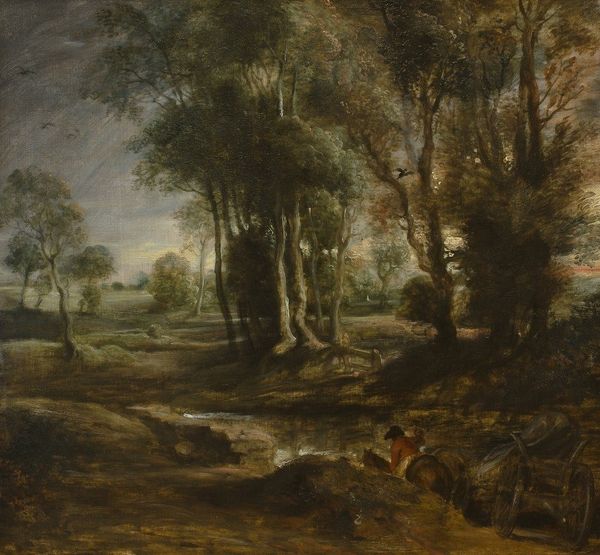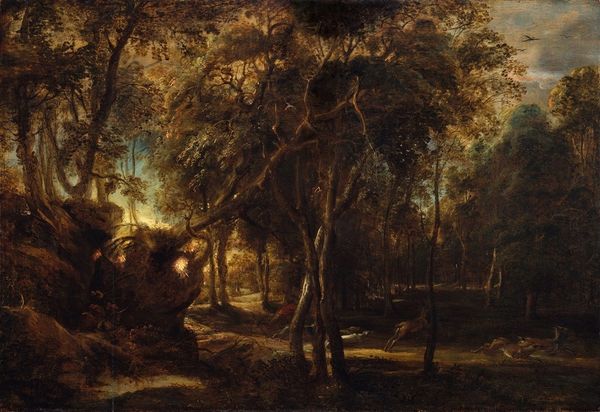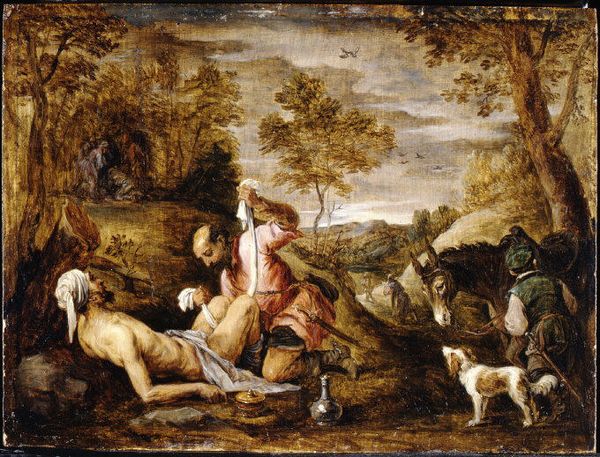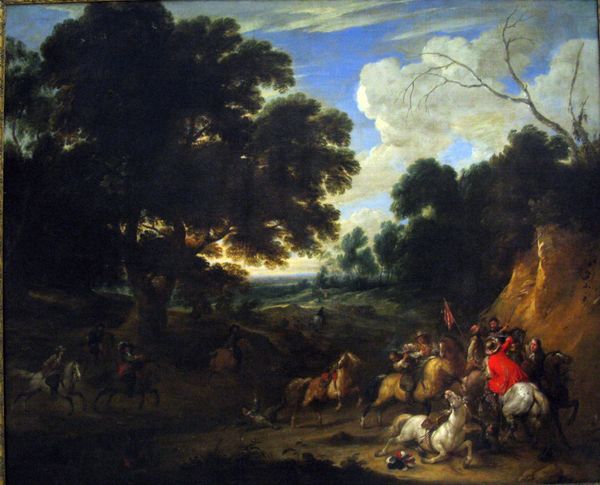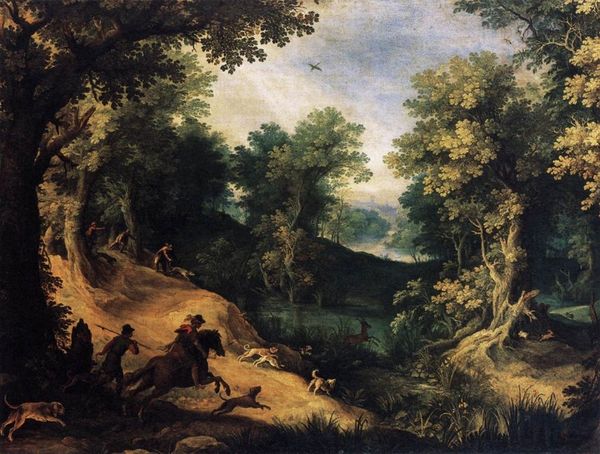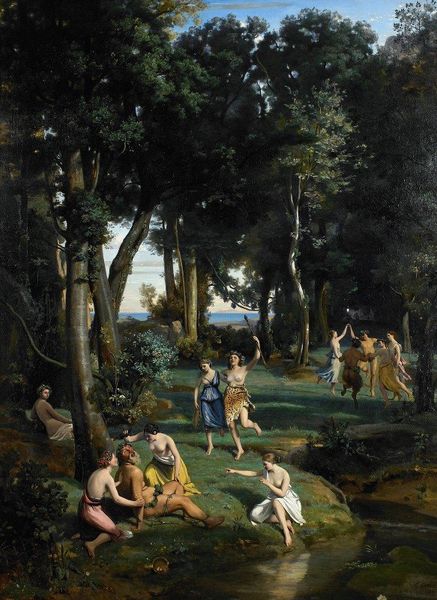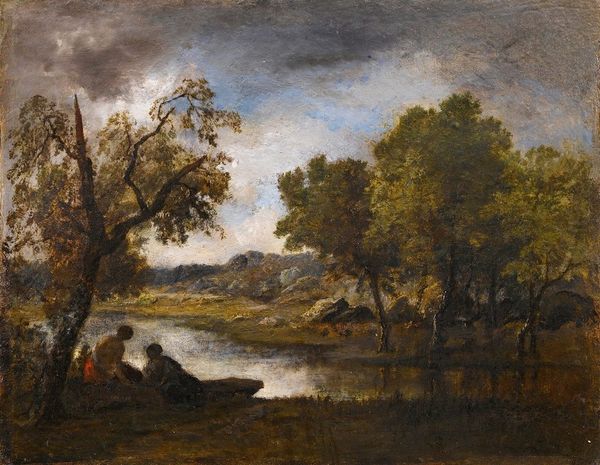
oil-paint
#
figurative
#
oil-paint
#
landscape
#
oil painting
#
romanticism
#
genre-painting
#
watercolor
Copyright: Public Domain: Artvee
Curator: Looking at this canvas, I am immediately struck by how Diaz constructs a world seemingly caught between representation and idealized vision. Editor: It feels... pastoral, doesn't it? Almost drowsy. There's a weight in the paint, a richness of tone, especially in the way the light dapples through the leaves. Curator: Indeed. We're looking at Narcisse Virgilio Diaz's, "Boy With His Dogs In A Wood." Completed in 1876, it offers an intimate glance into rural life and our entangled history with nature. There is something very Romantic happening, a boy and his dogs as a picture of leisure. But who did leisure benefit? And at whose expense? Editor: I am drawn to the materiality of it. You can almost smell the linseed oil, feel the textures. Consider the relationship between the artist and their materials at this time. The canvas itself, the pigments ground by hand perhaps – a slow, deliberate process informing the final piece. Also, what breed of dog are these and what was their social status in France in 1876? Curator: Precisely. Dogs were potent symbols of the shift in class structure during this period, embodying luxury for a new bourgeoisie but representing something altogether different in a society marked by enormous disparity. As for the artist's intentions... Do you think he consciously critiques social hierarchy here, or simply idealizes the beauty? What narratives are present, and are they accurate to all citizens of the time? Editor: It’s a compelling question. But in the layering of oil, in the very act of creation, there's an element of privilege on display, a commodification of 'the rustic.' Still, the handling of light, of earth, suggests a reverence for those materials. And who exactly was this "boy," the ostensible center of the piece, the person at leisure here. Is the piece meant to humanize him, as most portraiture attempts to do? Or is the boy an extension of the property he occupies, and in that sense, simply a tool himself. Curator: And how might these considerations impact the way modern viewers perceive it today? Editor: It invites us to consider not just what we see, but what labor and resources underpinned its creation. It's a reminder that even within depictions of 'nature,' the hands of society and capital are present, actively shaping what we value and consume. Curator: Absolutely. By dissecting the context, the very materiality, we reveal so much about its enduring influence on society, its historical weight and lasting power. Thank you for your thoughts.
Comments
No comments
Be the first to comment and join the conversation on the ultimate creative platform.
